Arar, Tehsil Sahiwal, District Sargodha.
Arar Shareef (Punjabi and Urdu:اراڑشریف) or simply as "Arar" ( coordinates:31°51'51"N 72°26'13"E 31.863365, 72.438867 ) is a historic village located in Sahiwal Tehsil, Sargodha, Pakistan.[1] It is nearby to the town of Farooqa, which is a mandi and central business hub since the British times. It is about 49 km (30.4 mi), south from Sargodha city.[2] Geographically it lies on a Jech Doab[3] between Sillanwali and Sahiwal Tehsil, Sargodha. Currently, the population of arar is more than 1000 approximately. Though its suburbs and colonies can altogether be a count of many thousands.
Arar | |
|---|---|
Village | |
| native_name = اراڑ | |
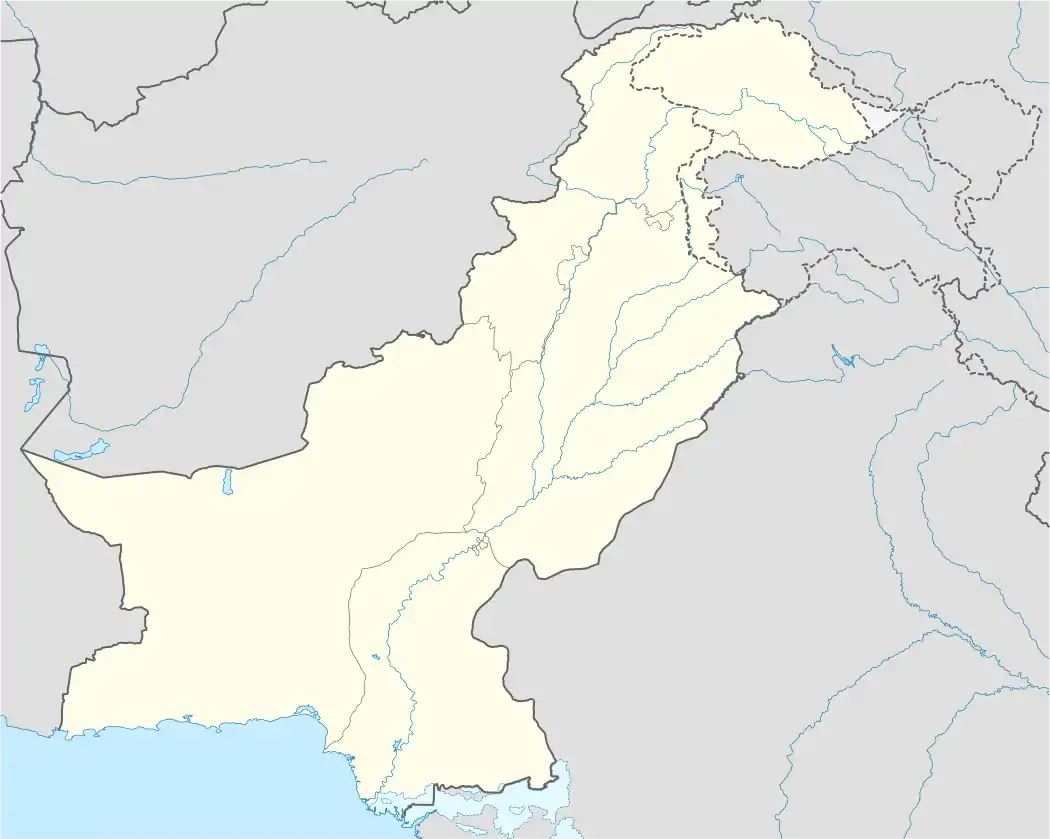 Arar Map showing location of Arar in Pakistan | |
| Coordinates: 31°51′51″N 72°26′13″E | |
| Country | |
| Province | Punjab |
| District | Sargodha |
| Tehsil | Sahiwal |
| First settled | 1800s |
| Settled by | Rai Haji Muhammad Baig Dhudy |
| Population (2018) | |
| • Total | 1,000 |
| Time zone | UTC+5 (PST) |
| Calling code | 0092 |
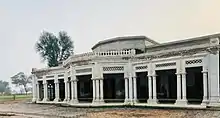
History
Historically, this village consisted of few houses of farmers of Arar caste before Rai Haji Muhammad Baig, the chief of Dhudy Rajput[4] tribe moved here from his ancestry town of Thatha Hakiman, in the 1800s. This village was made the center point of the Rai Baig's already existing vast farmland or 'Jagir'.[5][6] Rai Haji Baig was the grandson of Rai Ganda (a Punjabi Rajput prince during the late times of Mughal Empire).[7] This jageer or estate includes many villages and nearby towns including Jahanawala, Sajoka, Rabwa, Nava Lahore, Gandawala Khuh, Chak Ghulam Muhammad, and its colony, etc. It was known as the "Arar state" during the British Raj. Before the Partition of India,[8] a huge number of Hindus and Sikhs peasants and traders also lived here. It has been the religious and political hub for more than a century now. Here, there is a famous shrine "Dargah""[9] of 18th century Sufi saint, Mian Abdullah Dhudy, a.k.a Baba Dulla. Every year Urs[10] festival is held here in his remembrance. Hundreds of people from far away areas like Sindh[11] pay their visits during this time. Another historical place and attraction is the "Bangla" built by the British Government during the 1890s. Primarily, it was built as an office and a resthouse for the high-ranking English officers. However, after 1947 has remained under the Punjab Irrigation Department.[12] Furthermore, a well-reputed 'madrassa' or Islamic school is present here for decades. It was an inspiration from Molana Ahmed Ali Lahori,[13] a renowned Islamic scholar of the subcontinent. The dhudies have political dominance and are in majority over two union councils i.e Sajooka and Azmatwala. Though they play an important role and influence the politics of the region in large. Arar has been serving as a status of 'Maouza' by Government of Pakistan.[14] This town was also famous for the horses, which were kept by the chief Dhudy family. They included the horses for Tent pegging[15] Polo,[16] traditional horse dancing, and Horse racing. The reign of Rai Haji Ghulam Muhammad Dhudy is considered to be the golden era of Arar estate. He was the grandson of Rai Haji Baig. As a network of paved roads, concrete canals, electricity, schools, modern agriculture machinery, modern farming techniques, jobs, and madrasas were established. He was a supporter and close ally to Quaid e Azam Muhammad Ali Jinnah and his All-India Muslim League.[17] His father, Rai Haji Khuda Baksh was respected by the British Indian Government. Especially, He was regarded by the Governor Lord Malcolm Hailey, 1st Baron Hailey who laid the foundations of modern Sargodha City.[18]
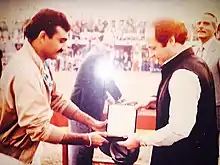
In 1986, Rai Haq Nawaz Dhudy established a sugar mill here by the name of Chishtia Sugar Mills (now SW Sugar Mills). Thus, creating huge employment scope for the locals and nearby population. He is the elder son of Rai Haji Amman Ullah and the grandson of Rai Haji Ghulam Muhammad Dhudy. Moreover, he is the current head and an influential figure of the district.
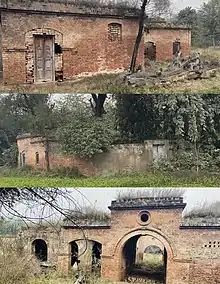
Agriculture
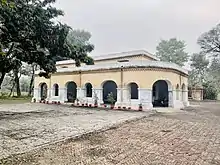
The land is very rich for agriculture. A canal is passing nearby. Citrus (mainly Kinnow) and Sugarcane are the major crops grown here. Kinnow, being famous worldwide from this locality. Though wheat, cotton, bamboos, etc are also cultivated. Thus, can be called a multi agricultural belt. Livestock[19] farming is also a major part of the region. Cattle, sheep, goat, poultry, and many other birds are kept. Commercial fish farms can also be seen in recent years.

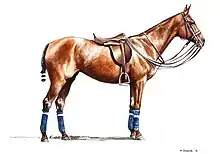
See also
- Hakiman
- Government of Pakistan
- British Raj
- Farooqa
- Sargodha District
- All-India Muslim League
- UrsDargah
- Partition of India
- Hindus
- Sikhs
- Sahiwal Tehsil, Sargodha
References
- Tehsils & Unions in the District of Sargodha - Government of Pakistan Archived 2012-02-09 at the Wayback Machine
- http://sargodha.dc.lhc.gov.pk/PublicPages/HistoryOfDistrict.aspx
- Rivers of the World, James R Penn, p122, 2001, ISBN 1-57607-042-5, accessed April 2009
- Catherine B. Asher; Cynthia Talbot (2006). India Before Europe. Cambridge University Press. p. 99. ISBN 978-0-521-80904-7.
- HH Davies; W Blyth (1873). Umritsur, Sowrian & Turun isTarun. Lahore: Government Civil Secretariat Press. p. 29.
- Mohammad Qadeer (2006). Pakistan - Social and Cultural Transformations in a Muslim Nation. Routledge. pp. ix, 44. ISBN 978-1-134-18617-4.
- Richards, John F. (1995), The Mughal Empire, Cambridge University Press, p. 2, ISBN 978-0-521-56603-2 Quote: "Although the first two Timurid emperors and many of their noblemen were recent migrants to the subcontinent, the dynasty and the empire itself became indisputably Indian. The interests and futures of all concerned were in India, not in ancestral homelands in the Middle East or Central Asia. Furthermore, the Mughal empire emerged from the Indian historical experience. It was the end product of a millennium of Muslim conquest, colonization, and state-building in the Indian subcontinent."
- Partition (n), 7. b (3rd ed.). Oxford English Dictionary. 2005.
The division of British India into India and Pakistan, achieved in 1947.
- Delage, Remy; Boivin, Michel (2015). Devotional Islam in Contemporary South Asia: Shrines, Journeys and Wanderers. Routledge. ISBN 9781317380009.
- "Urs". Archived from the original on 2019-10-31. Retrieved 2020-04-19.
- "Sindh Province". ActionAid. Retrieved 26 November 2015.
- Douie, James (1914). "The Punjab Canal Colonies". Journal of the Royal Society of Arts. 62 (3210): 611–623. JSTOR 41341616.
- Profile of Ahmed Ali Lahori on google.com website, Retrieved 2 May 2017
- "About Government". Government of Pakistan. Archived from the original on 2007-10-24. Retrieved 2009-03-05.
- "Contacts | International Tent Pegging Federation اﻻتحاد الدولى لﻻلتقاط اﻻوتاد". worldtentpegging.com. Archived from the original on 11 October 2014. Retrieved 11 August 2014.
- "THE HISTORY OF POLO". argentinapolo.com.
- "Establishment of All India Muslim League". Story of Pakistan. June 2003. p. 1. Retrieved 14 February 2014.
- "No. 34307". The London Gazette. 21 July 1936. p. 4670.
- "livestock". Britannica.com.